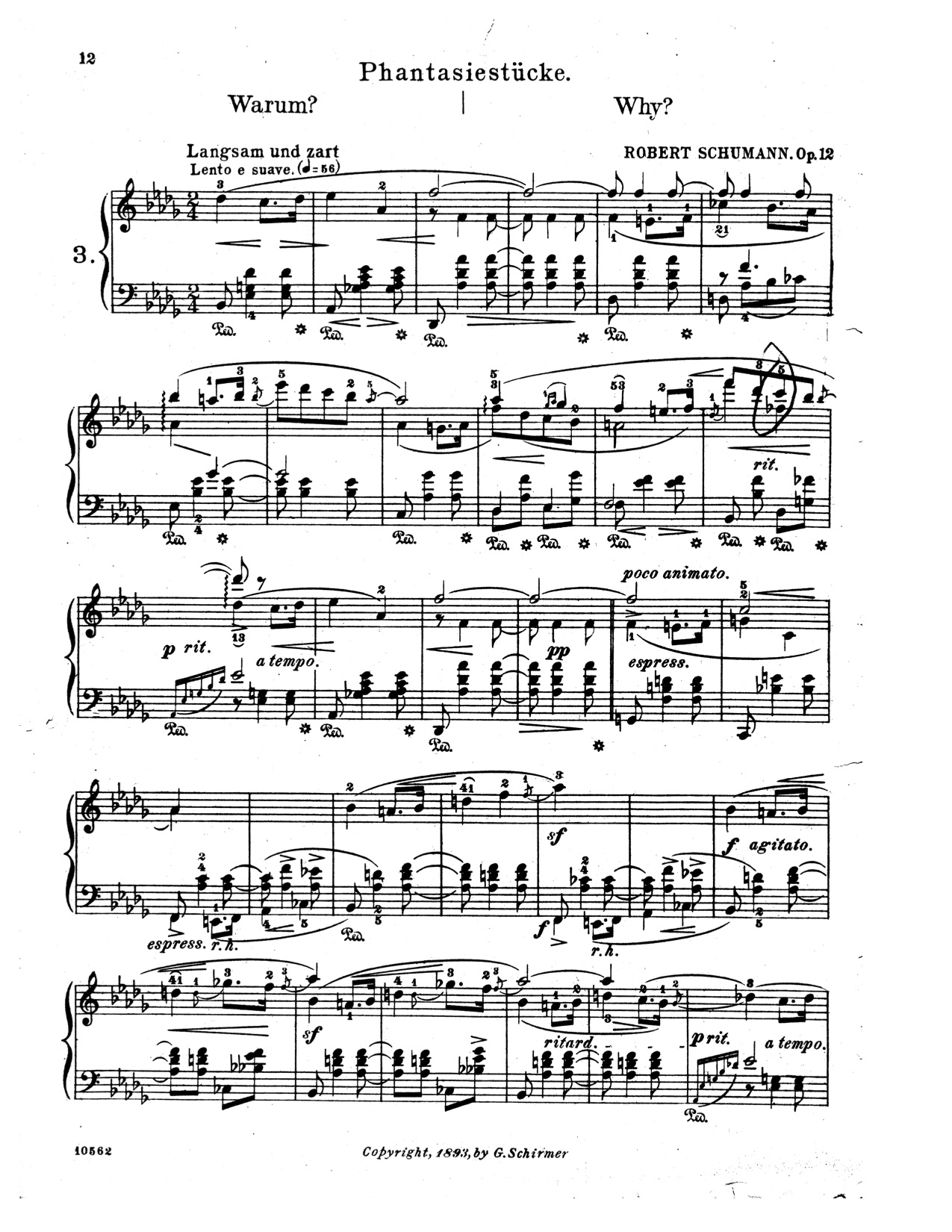Composition task 1 - Instrumental scoring
A. In 1874, the Russian composer Modest Mussorgsky wrote a piece for piano called Pictures at an Exhibition. Follow the link from the previous step to listen to it.
Listen to one of the original pieces for piano describing an old castle:
Here is the orchestral version by Ravel in 1922:
Discuss: Which instruments (including range, devices and timbre) were used to describe the old castle and why?
Try and orchestrate this short piece for piano by Robert Schumann from bars 1 to 24. Consider the following points:
- This piece is called Warum? (meaning ‘Why?’). Here is the link and score:
- It’s a profound and meaningful piece and the choice of instruments and how they play should reflect this.
- Remember, you have THREE elements: melody, counter-melody and accompaniment.

Other effective ways of orchestrating – Solo instruments
Sometimes, a short introduction by ONE instrument can be more than enough. This is a piece called Le Pastour (The Shepherd) by the composer Gabriel Grovlez. The piano opens with a monophonic texture describing the open air and breeze through a number of arpeggios.
The same type of effect can be found in the following piece, played by a solo flute this time. This is the opening of the Prélude à l'après midi d'un faune by the composer Debussy, describing another scene from nature – a scorching hot afternoon in the life of a young deer or fawn. Discuss the role of the flute and the harp playing the glissandi in the introduction, and how they combine to contribute to the sultry atmosphere where practically everything shimmers in the heat.